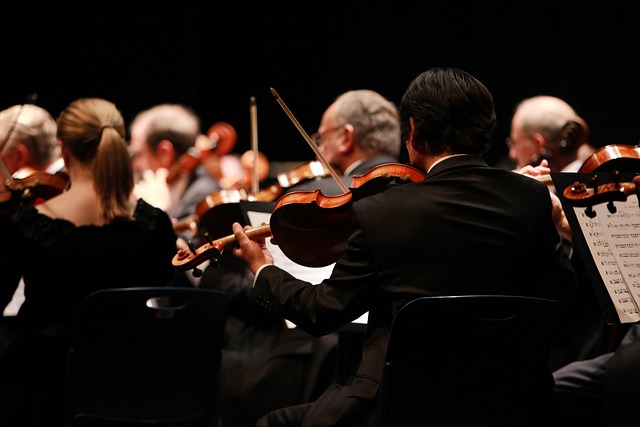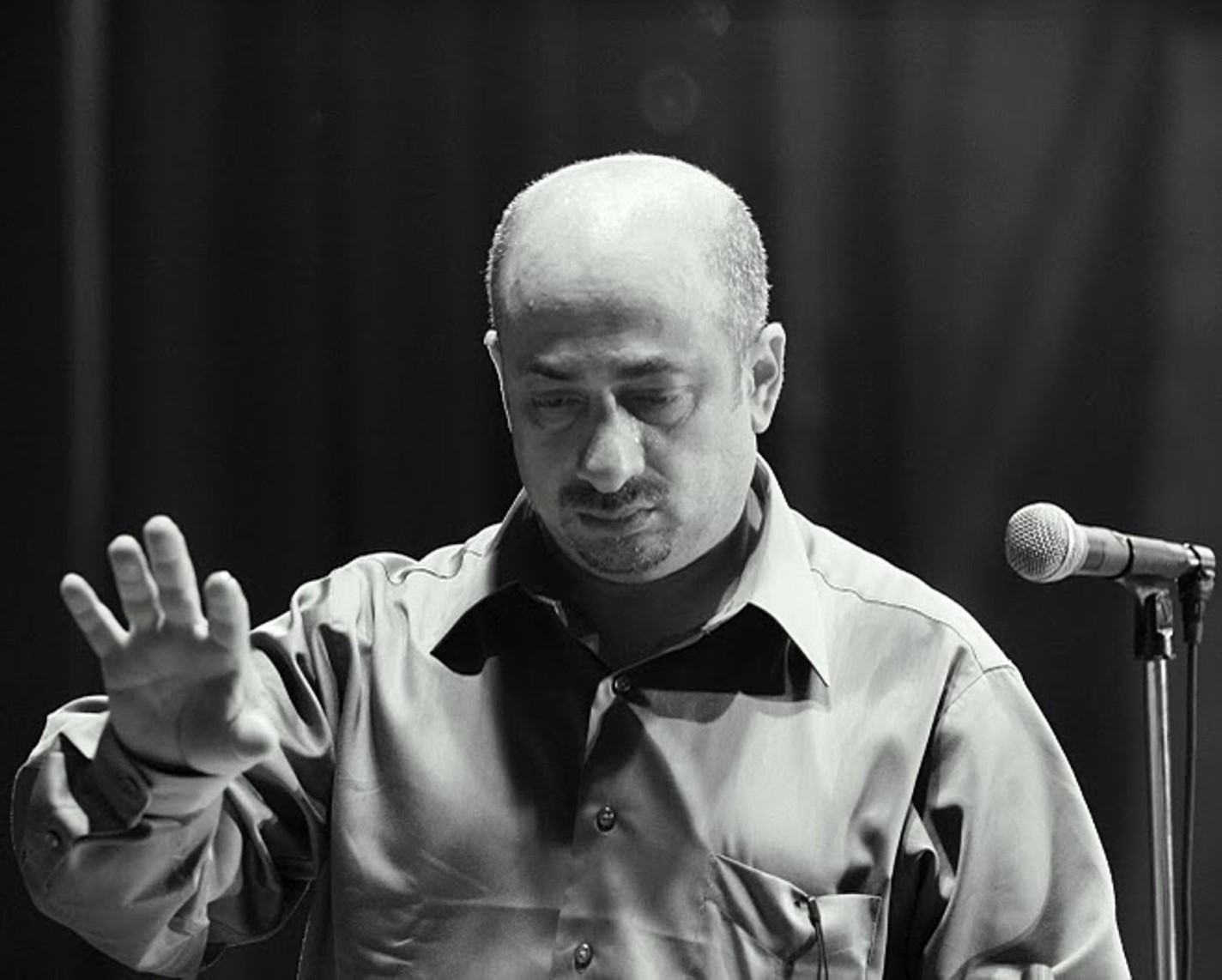LMU0169 - Orchestration I with Issa Boulos
Course Description
 This online course teaches orchestral writing and arrangement techniques for traditional ensembles (strings, brass, woodwinds, percussion) and mixed instrumentations, including the integration of ethnic instruments. You’ll learn to craft balanced textures, apply voice leading across diverse timbres, and adapt harmonic frameworks for hybrid ensembles.
This online course teaches orchestral writing and arrangement techniques for traditional ensembles (strings, brass, woodwinds, percussion) and mixed instrumentations, including the integration of ethnic instruments. You’ll learn to craft balanced textures, apply voice leading across diverse timbres, and adapt harmonic frameworks for hybrid ensembles.
Topics include:
- Instrument-specific techniques: idiomatic writing for strings, brass, woodwinds, percussion, and ethnic instruments (e.g., plucked strings, winds, or percussion from non-Western traditions).
- Arrangement strategies: layering traditional and ethnic instruments, managing timbral contrasts, and creating cohesive hybrid textures.
- Orchestration essentials: register optimization, dynamic balancing, and counterpoint for mixed ensembles.
Final Project Options
Submit ONE of the following:
- A piano piece orchestrated for a chamber group (traditional or mixed ensemble).
- An original melody re-arranged/expanded for traditional and ethnic instruments.
- An original chamber orchestra composition incorporating mixed ensembles.
About the Instructor
Dr. Issa Boulos has bachelor’s and master’s degrees in music composition and a Ph.D. in Ethnomusicology. He composes instrumental and vocal music for orchestra, chamber, traditional, and mixed ensembles. Among his commissions are pieces for the Chicago Symphony Orchestra. He scored for award-winning documentaries, plays, films, and musicals.
Course Outline
Meeting 1: Introduction to Orchestral Writing
• Overview of orchestral writing: recorded vs. live settings.
• Introduction to orchestral instruments: strings, brass, woodwinds, and percussion.
• Basics of orchestration: melody, harmony, rhythm, and texture.
• Exercise: Analyze a simple piano piece and discuss potential orchestration ideas.
Meeting 2: Strings - The Backbone of the Orchestra
• Characteristics and techniques of string instruments (pizzicato, tremolo, vibrato).
• Writing for violin, viola, cello, and double bass: range and articulation.
• Exercise: Create a simple string arrangement for a melody.
Meeting 3: Brass - Power and Majesty
• Overview of brass instruments (trumpet, trombone, French horn, tuba).
• Dynamics and lung capacity considerations in brass writing.
• Exercise: Write a brass section accompaniment for a given melody.
Meeting 4: Woodwinds - Color and Expression
• Characteristics of woodwinds (flute, clarinet, oboe, bassoon).
• Techniques like dovetailing and doubling.
• Exercise: Add woodwind layers to an existing string or brass arrangement.
Meeting 5: Percussion - Rhythm and Impact
• Introduction to orchestral percussion (timpani, snare drum, cymbals).
• Using percussion to enhance dynamics and mood.
• Exercise: Incorporate percussion into a short orchestral sketch.
Meeting 6: Sketching and Developing Ideas
• Importance of piano reduction as a starting point.
• Developing motifs and themes for orchestration.
• Exercise: Create a piano sketch with motifs ready for orchestration.
Meeting 7: Combining Sections
• Balancing strings, brass, woodwinds, and percussion in an arrangement.
• Techniques for blending textures and achieving balance.
• Exercise: Orchestrate a short piece using all sections.
Meeting 8: Final Project Workshop
• Review project options:
• Piano piece orchestrated for chamber group.
• Original melody re-arranged/expanded.
• Original chamber orchestra composition.
• Peer review and feedback on drafts.
• Finalize projects in MusicXML format using notation software.
Learner Outcomes
Upon successful completion of this course, students will be able to develop scores that blend traditional orchestral instruments with culturally diverse sounds, emphasizing clarity, blend, and expressive depth in mixed ensembles. Here is a list of what you'll walk away with:
• Instrumental Proficiency: Write effectively and idiomatically for strings, brass, woodwinds, and percussion, demonstrating an understanding of each instrument's range, timbre, and technical capabilities.
• Orchestral Techniques: Apply principles of orchestral balance, texture, and color to create cohesive arrangements for both recorded and live settings.
• Score Preparation: Prepare professional-quality scores and parts using musical notation software capable of producing MusicXML format.
• Creative Application: Develop original orchestrations by transforming piano pieces or melodies into chamber group arrangements or composing original works for chamber orchestra.
• Analytical Skills: Analyze and evaluate orchestration techniques in existing orchestral literature to inform creative decisions.
• Collaborative Understanding: Demonstrate familiarity with the interplay between instrumental families and their combined effects on orchestral sound.
These outcomes align with the course description and required skills, ensuring comprehensive development in orchestral writing techniques.
Notes
Prerequisites
Requirements:
- Proficiency in basic music theory (major/minor keys, chord structures, voice leading, harmony, counterpoint).
- Musical notation software (Finale, Sibelius, MuseScore) capable of exporting MusicXML.
- Recommended: Familiarity with the tonal characteristics and technical limits of ethnic instruments (supplementary resources provided).
Required Text: Technique of Orchestration, 6th Edition: Kent Kennan
 Issa Boulos is an international award-winning composer, lyricist and songwriter. His works have been performed by various groups and orchestras around the world. He studied piano, ‘ud and voice at an early age and later pursued music composition with Gustavo Leone, Athanasios Zervas, and William Russo at Columbia College Chicago and with Robert Lombardo and Ilya Levinson at Roosevelt University. He earned his Ph.D. in Ethnomusicology from Leiden University. Throughout his career, Issa has injected new life into his music by incorporating traditional instruments in innovative ways. He has composed music for full orchestra, chamber, mixed ensembles, and written hundreds of songs including several hits. Among his commissions are four pieces for the Chicago Symphony Orchestra, composition/performance for the Silk Road Ensemble, and original scores for award-winning documentaries, plays, feature films and musicals. Through these efforts, Issa has gained recognition in the United States, the Middle East, and Europe. He has served as a lecturer at the University of Chicago for nearly a decade and co-founded the Qatar Music Academy and acted as its Head of Music since its inception in 2010. Mr. Boulos serves as Coordinator of the Harper Community Music and Arts Center.
Issa Boulos is an international award-winning composer, lyricist and songwriter. His works have been performed by various groups and orchestras around the world. He studied piano, ‘ud and voice at an early age and later pursued music composition with Gustavo Leone, Athanasios Zervas, and William Russo at Columbia College Chicago and with Robert Lombardo and Ilya Levinson at Roosevelt University. He earned his Ph.D. in Ethnomusicology from Leiden University. Throughout his career, Issa has injected new life into his music by incorporating traditional instruments in innovative ways. He has composed music for full orchestra, chamber, mixed ensembles, and written hundreds of songs including several hits. Among his commissions are four pieces for the Chicago Symphony Orchestra, composition/performance for the Silk Road Ensemble, and original scores for award-winning documentaries, plays, feature films and musicals. Through these efforts, Issa has gained recognition in the United States, the Middle East, and Europe. He has served as a lecturer at the University of Chicago for nearly a decade and co-founded the Qatar Music Academy and acted as its Head of Music since its inception in 2010. Mr. Boulos serves as Coordinator of the Harper Community Music and Arts Center.